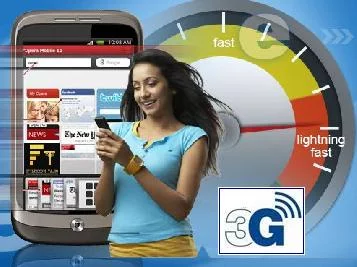 Only one in five of India’s urban, mobile subscribers will adopt 3G services in the short term, a new study by The Nielsen Company has found.
Only one in five of India’s urban, mobile subscribers will adopt 3G services in the short term, a new study by The Nielsen Company has found.
Despite high awareness of 3G and its capabilities to deliver broadband content, it may be as long as 8-10 years before the majority of mobile users are on a 3G phone plan. Released at Nielsen’s flagship Consumer 360 conference in Delhi today, the study found that nearly 70 percent of urban mobile subscribers are aware of 3G services and 63 percent had familiarity with it as a concept.
The most eager group ready to adopt 3G was power users largely made up of working professionals and internet-savvy youth. They told Nielsen they were eager to embrace higher speeds to access the internet and download large attachments.
A third (36%) of these consumers indicated a strong disposition towards 3G adoption. Other, less tech reliant groups, were less enthusiastic about the next wave of mobile services.
To Drive Mass Adoption, Handset Bundling Will Need to Be Implemented. Even with an enhanced user experience on a 3G network, driving migration to 3G devices will be a challenge.The study found that bundling 3G services with new handsets will be the most effective course of action for telecom carriers.
Thirty five percent of subscribers said they would leave their current carrier if they failed to provide 3G services. In contrast, only six percent of those less inclined to purchase 3G services said they would change carrier if 3G was not made available.
The study also identified an area of particular attention for carriers: reducing pricing to drive 3G adoption may not necessarily grow their businesses. It will come down to the user experience and relevance of services.
“The demand for 3G will dictate the future of smart phones and the competitive landscape amongst service providers. Simply making 3G services affordable will not offer an easy answer to accelerating adoption as we move into an era of more unpredictable handset replacement cycles and the polarization of 3G users within the subscriber base towards operators who offer a better 3G experience” said Arjun Urs, Director - Client Solutions India, The Nielsen Company.
3G’s success in the Indian market will depend on three key strategies, according to The Nielsen Company:
(1) Creating a compelling user experience through services and handset upgrades will be necessary for wider adoption amongst Indian consumers: Over the last half decade the combination of a better user experience and the widespread use of superior handsets bundled with services have led to a seamless migration to 3G in the U.S.
(2) Creating a strong brand association with 3G and demonstrating the relevance of services that 3G can deliver will be the key to consumer acceptance in India. Japan for instance has achieved near universal 3G penetration over the last decade through innovative data plans and highly relevant services for its consumers. In contrast, 3G penetration in China has been sluggish due to the challenges of setting up 3G infrastructure and low consumer education on the facets of 3G.
(3) Merely positioning 3G as ‘faster’ and making it affordable will not drive adoption in India. The Korean market, despite achieving nearly 90 percent 3G penetration with the help of government impetus, has not managed to register high data usage. Data usage has remained restricted to downloads like ringtones, graphics and games. Operators have now begun to create services that are more relevant to consumers to increase revenues from data.
| Intention to Adopt 3G | All | Power User | Imitator | Ambivalent | Uninvolved |
| Will definitely adopt 3G | 19% | 36% | 20% | 10% | 7% |
| Will probably adopt 3G | 43% | 34% | 65% | 31% | 41% |
| May or may not adopt 3G | 25% | 15% | 12% | 31% | 45% |
| Will probably not adopt 3G | 7% | 7% | 1% | 17% | 5% |
| Will definitely not adopt 3G | 5% | 7% | 1% | 13% | 2% |
Table -2
| Intention to Upgrade to 3G Handset | Disposed towards 3G | Not disposed towards 3G |
| Will definitely adopt 3G handset | 63% | 12% |
| Will probably adopt 3G handset | 24% | 24% |
| May or may not adopt 3G handset | 10% | 36% |
| Will probably not adopt 3G handset | 3% | 20% |
| Will definitely not adopt 3G handset | 0% | 8% |















